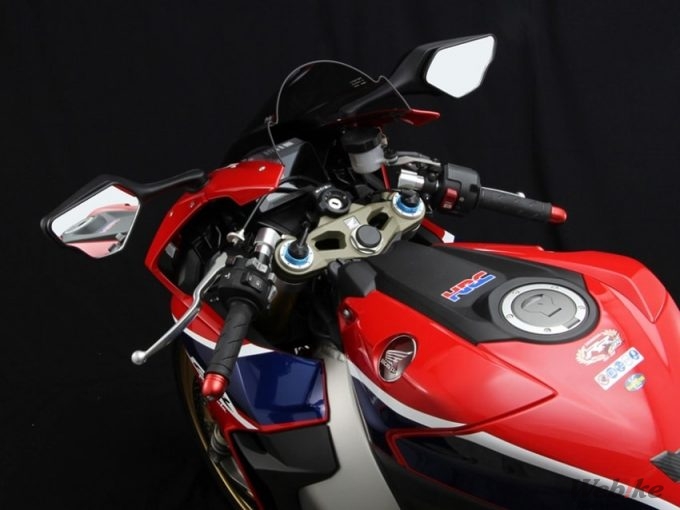The new KATANA (Katana) is a topic at the 2018 Inter Motto show, but this 1984 type GPZ 900 R appeared 2-years after the first GSX1100S KATANA. Take a look back on the history of the memorable model and the major family in Ninja for the first time in North America.
Succeeding the Z1 [Magic 9] NINJA Advent in the Water-cooled Era
NINJA – It is a brand name symbolizing KAWASAKI alongside Z. In the early 1980s, as the times changed from air-cooled to water-cooled, KAWASAKI also demanded new machines, and developed the first NINJA GPZ900R in the motto “Z 2010 2nd Model”. The impact which swept the world with overwhelming power performance was great, and there were many machines having the name of NINJA which became synonymous with sports bike after that. And, the common to all models including the GP racer was to be “strongest and the fastest”. Currently, the name of NINJA, which extends to the middle class as the official name, is not only the strongest and fastest meaning, but also the title given to the best performance motorcycle in the class. *Young Machine from May 2014 Issue
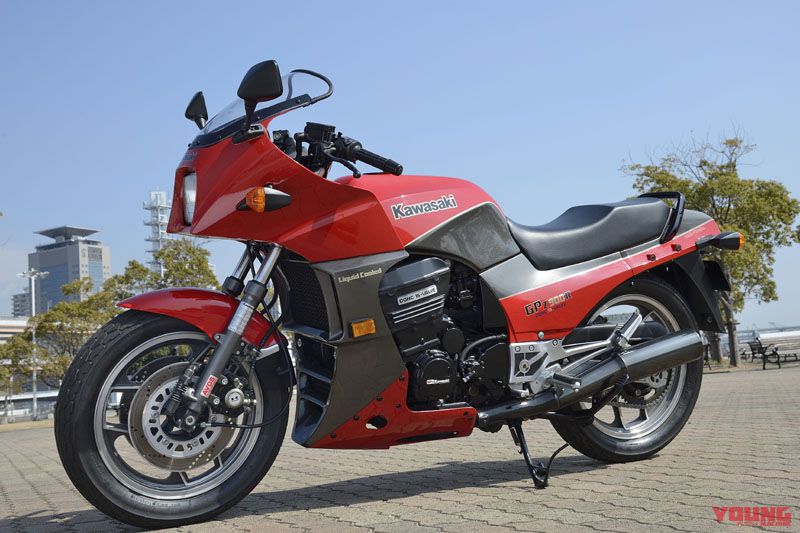
[KAWASAKI GPZ900R
Really this is the end! 900 Ninja Final Type
The GPZ900R has undergone twice large model changes. The first time was the A7 in 1990 and the F Fork in the diameter of 38mm→41mm. The F-brake was strengthened from 1-pot to an opposing 4-pot & diameter 300mm rotor, and the F-wheel was changed to 16→17 inches. The rear circumference extends the rim width while continuing 18-inches, and the tire of 130→150 size is standard. The brake has also been changed from 1-pot to 2-pots. And the second time was equipped with a 6-pot F-brake, coil spring rear shock, and radial tires in the 1999 A12. It corresponds to japanese Emission regulation at A15 of 2002, and it is the final specification with this A16 color-changed. If it misses this, it can not be bought again with a new motorcycle. *From Young Machine June 2003 Issue
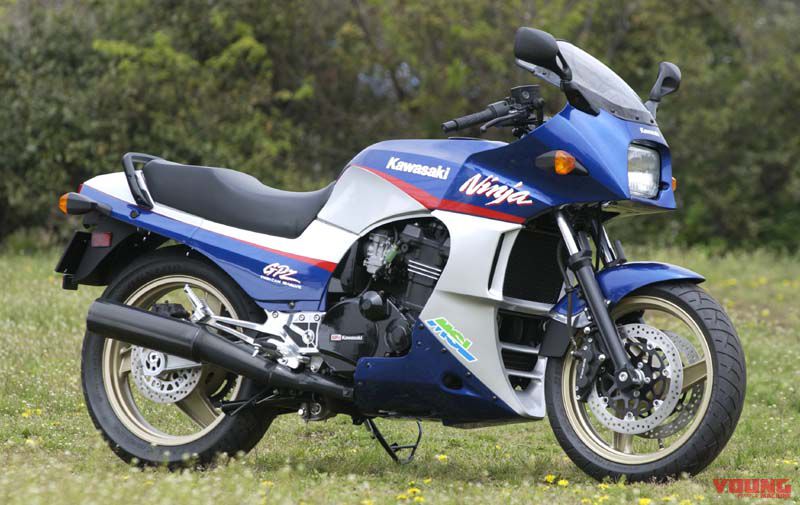
[KAWASAKI GPZ900R
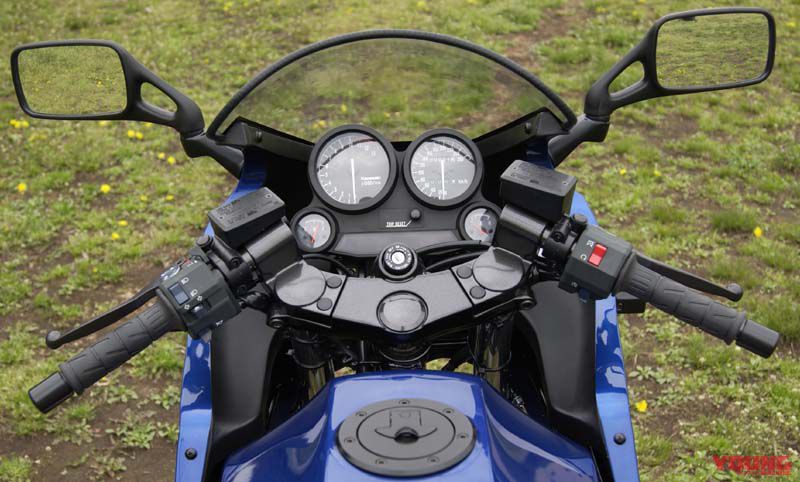
A16 final edition cockpit. The quadruple meter is easy to see from the left with a fuel gauge, a tachometer, a speedometer, and a water temperature gauge. The position of speed and tachometer has reversed in Japan specification.
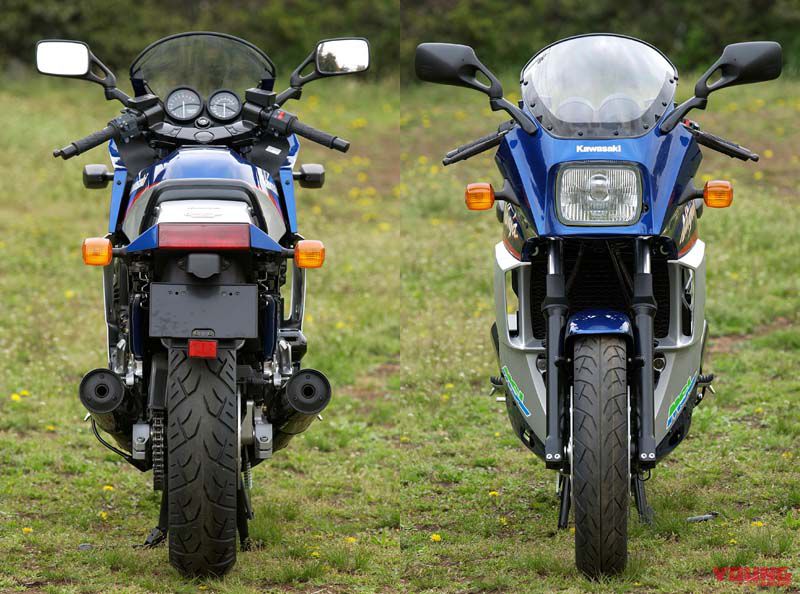
It is an immutable form from the initial type until the A16 final edition. It is a unique design that the rear view can be seen as a NINJA at a glance. The left and right twin exhaust system is a megaphone shape which is also inherited from the initial type.
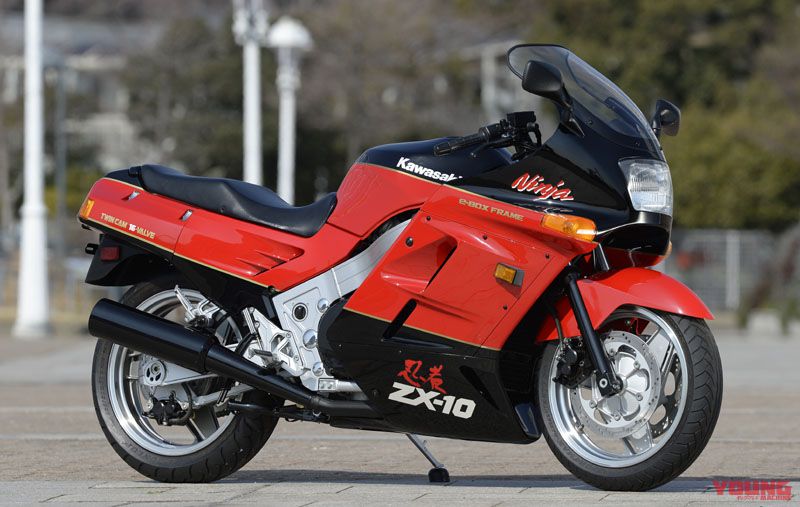
[KAWASAKI Ninja ZX-10 1988] It achieves substantial weight saving by reviewing completely newly designed aluminum e-BOX frame and engine. It adopts front 17/18-inches radial tire. •Water-cooled 4-stroke Parallel 4-cylinder DOHC 4 Valve 997cc 137ps 222kg (Dry)
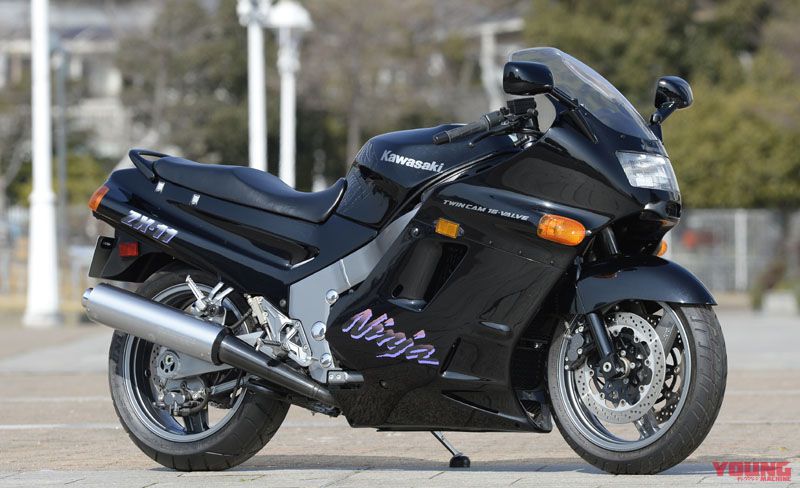
“[KAWASAKI Ninja ZX-11 1990] It adopts the ram air system, and it was an impact engine that began to strike 147ps + α and “”320km/h”” engraved on the meter. It reigned in the fastest position in the 1990s. •Water-cooled 4-stroke Parallel 4-cylinder DOHC 4 Valve 1052cc 147ps 228kg (Dry)
“
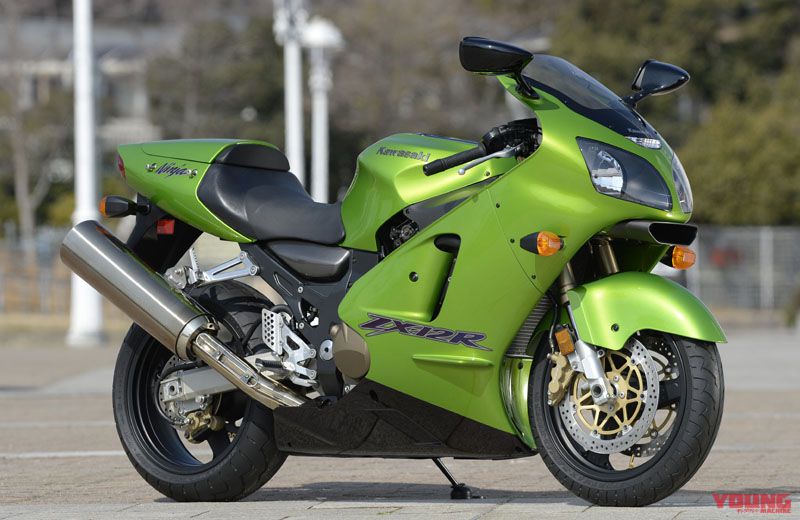
[KAWASAKI Ninja ZX-12R 2000] It is a mega sport wrapped in the cowl of the monocoque frame and the aviation technology application 178ps engine. It boasted a capability of over 300km/h even in STD. •Water-cooled 4-stroke Parallel 4-cylinder DOHC 4 Valve 1199cc 178ps 210kg (Dry)

[KAWASAKI Ninja ZX-14R 2012] It is the latest flagship that captured the old enemy HAYABUSA with 1441cc engine. It has succeeded the user-friendly ZZR tradition such as high performance but good footsteps. •Water-cooled 4-stroke Parallel 4-cylinder DOHC 4 Valve 1441cc 200ps 268 kg (Equipment) *The photo is 2014 model with ABS.

[KAWASAKI Ninja ZX-6R 1995] It is 600SS which demonstrates 100 ps. It is communal to frames with 9R until the 2002 model. •Water-cooled 4-stroke Parallel 4-cylinder DOHC 4 Valve 599cc 100ps 182kg (Dry)

[KAWASAKI Ninja ZX-10R 2004] The aluminum twin spar frame is equipped with a compact high power engine. It achieves best-in-class power-weight ratio with thorough weight saving. It is full of suspension such as radial mount caliper. •Water-cooled 4-stroke Parallel 4-cylinder DOHC 4 Valve 998cc 175 ps 170kg (Dry)
Original Source[ YOUNG MACHINE ](*Japanese)
See KAWASAKI Moto Index Page
See Accessories for KAWASAKI GPZ900R Ninja


